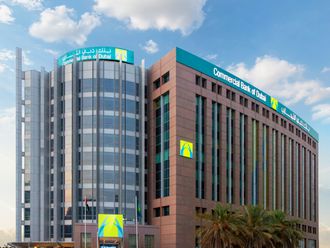London: A combination of a huge stimulus announced this year and rock-bottom interest rates are trickling through to Saudi Arabia's banks, which are resuming lending to the private sector at the fastest pace in two years, economists say.
Bank lending to companies was severely curtailed after an economic slowdown induced by the collapse of Lehman Brothers and region's debt problems.
Yet Saudi bank credit to the private sector expanded 7.1 per cent in May, the fastest rate of growth in two years, according to Banque Saudi Fransi in Riyadh.
"We're gradually starting to see the effect of the fiscal stimulus on the banking system," says Alia Moubayed, an economist at Barclays Capital. "Whether it is funding the construction of homes, improving access to housing finance or increasing wages, the money flowing into the system is making banks more comfortable to lend as they see people's income rising further."
Tightened rules
Barclays Capital forecasts that this trend will continue with credit to the private sector reaching 10.2 per cent by the end of the year.
The banks are now back to the same lending levels as May 2009 when news started to emerge that two companies, Saad Group and Ahmad Hamad Algosaibi & Brothers, had defaulted on debt. Private-sector lending, crucial to the expansion of the country's non-oil economy, was severely curbed as banks tightened their rules to move away from lending based on reputation.
Since then, banks have become less risk-averse and are diverting funds away from the low-interest bearing central bank.
"The domestic economy is now recovering, public spending is strong, banks are liquid and rates are low. That's the kind of environment where you expect banks to lend," says Simon Williams, economist at HSBC in Dubai.
Healthier credit figures are likely to give the Arab world's largest economy a boost as the non-oil sector benefits from easier access to funds. The economy may grow 5 per cent this year, the fastest pace since 2005, from 3.8 per cent last year, according to recent HSBC estimates.
This year Saudi Arabia announced emergency spending plans of about $130 billion (Dh477 billion) to help create jobs and build 500,000 homes after protests shook neighbouring Bahrain. Before that, the kingdom had already announced record spending plans in this year's budget.
Lower estimates
This year's spending may total 37 per cent of the package, according to Barclays Capital. A further 27 per cent will be spent next year and the remainder over 2013-15, according to the bank, which forecasts the total package to cost about $125.9 billion, slightly lower than some other bank estimates.
Bank credit to the government and its companies fell by 0.4 per cent in May, after a steeper drop of 5.8 per cent in April. "In absolute terms, the expansion in private-sector credit easily outweighed the decline in credit to public-sector enterprises, reflecting the relatively small size of public-sector lending," according to Banque Saudi Fransi's monetary watch report published this month.
Loans to the government totalled 27.6 billion Saudi Riyals (Dh27.03 billion) in May, far less than the 775.4 billion in credit extended to the private sector, a signal that the government has never crowded out private companies, says Banque Saudi Fransi.
"Banks' risk aversion is also waning, to a large extent encouraged by greater stability than at the beginning of the year when the turmoil in Bahrain was erupting," says Moubayed.
— Financial Times











